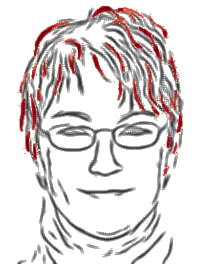Inspire.
|
 |
AETC Standard 3Learning Environments
Candidates facilitate learning by creating, using, evaluating and managing effective learning environments. |
EDET
735- Technological Applications for Diverse Populations, Spring 2018
with Dr. Ismahan Arslan-AriAssignment:In our Diverse Populations class, we learned about barriers to learning and how to use Universal Design of Learning (UDL) to design instruction that uses the talents and capacity of diverse learners. We discovered a wide range of tools to accommodate the differently-abled and employed tools to ensure that all of our digital products were accessible to all audiences. In this artifact, we were instructed to create an accessible Powerpoint presentation that summarized our research and learning about UDL. Our goal was not simply to demonstrate our knowledge about UDL, but we also needed to effectively use the accessibility tools in Microsoft Office resources.When using Office tools, we learned that we should use style tools, alternate text, and accessibility checkers to ensure that that screen readers and differently-abled students can read and access course materials.
Reflection:Universal DesignThis course was a real eye-opener for me. I was able to experience what disabled students experience. It allowed me to widen my perspective and consider learner variability when developing projects. I was able to better understand that students can demonstrate mastery in any number of ways. Students can showcase their unique talents when provided with voice and choice in performance assessments. The research we did in this course assured me that UDL was sound pedagogy. Furthermore, these principles were further reinforced in a subsequent education theory course. I was able to integrate more voice and choice in my classes. I have been able entice learners into the learning process by ensuring that their interests would be honored and their talents would indeed be recognized. Accessibilility Furthermore, I have embraced WebAIM practices that verify that text is accessible to disabled students, whether the disability be visible or invisible. Not only is it the responsible thing to do to, it is the law. The Americans with Disabilities Act and Sections 504 and 508 of the Rehabilitation Act require that educators provide equal access to learning materials and learning experiences. In this course, I was given a wealth of resources to increase my students' engagement in my courses. From the use of Optical Character Recognition software or speech-to-text/text-to-speech tools, teachers can make use of technology to accommodate the diverse needs of our students. |
| Artifact: UDL Learner
Variability slide show |